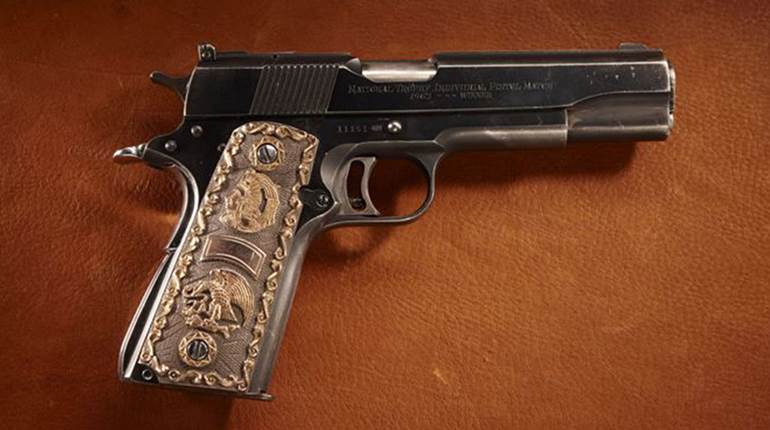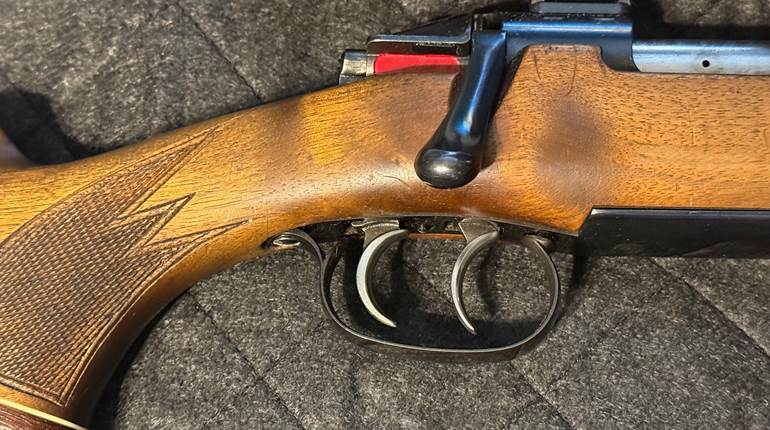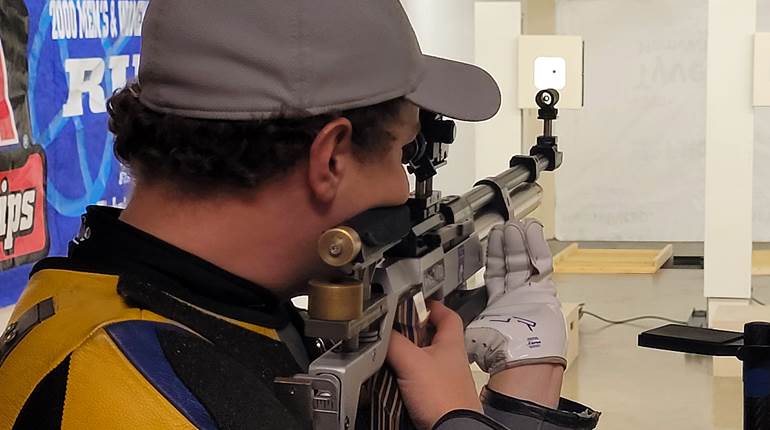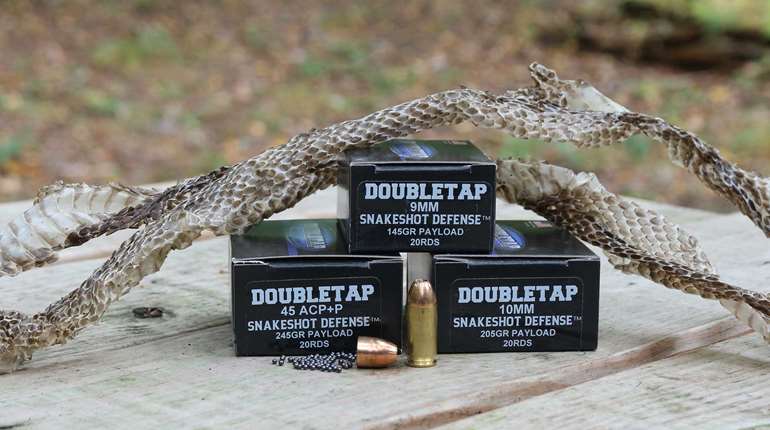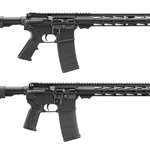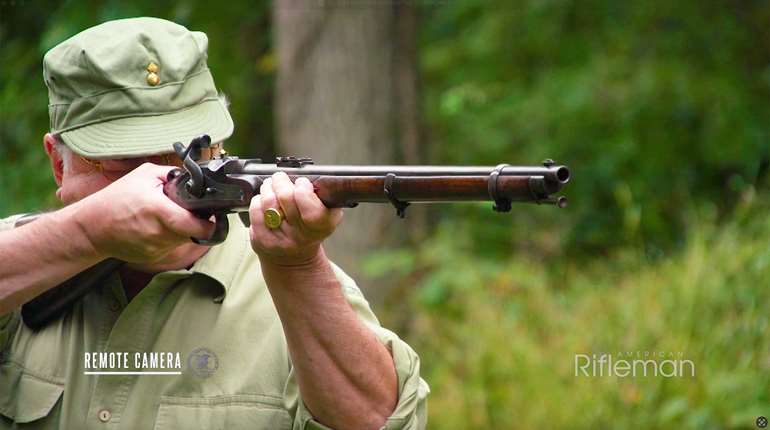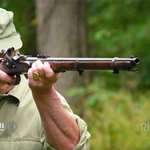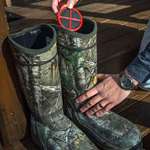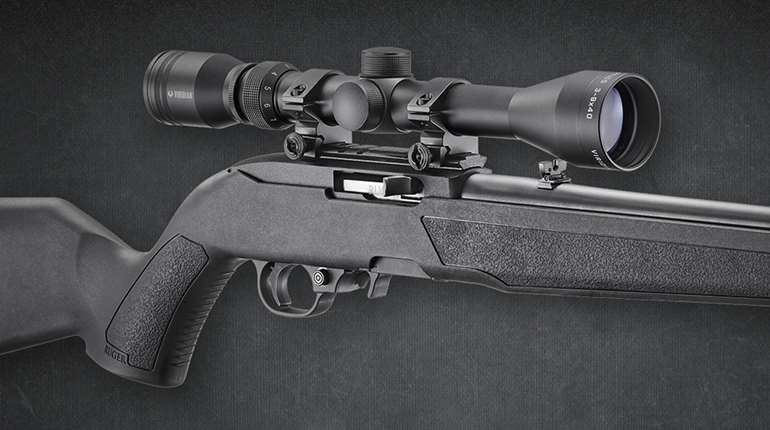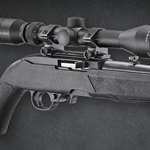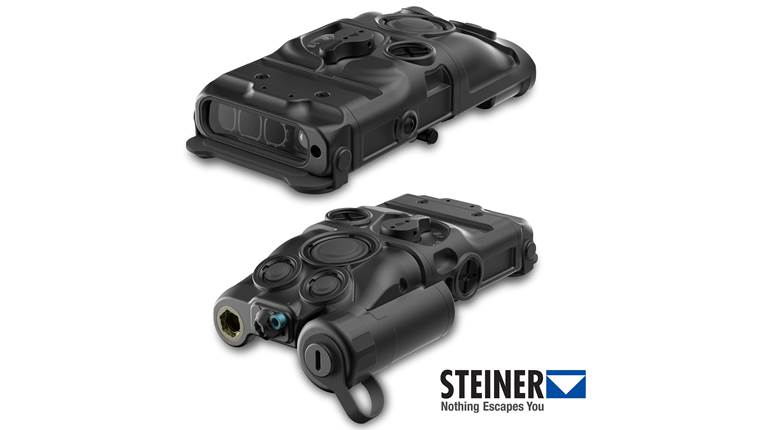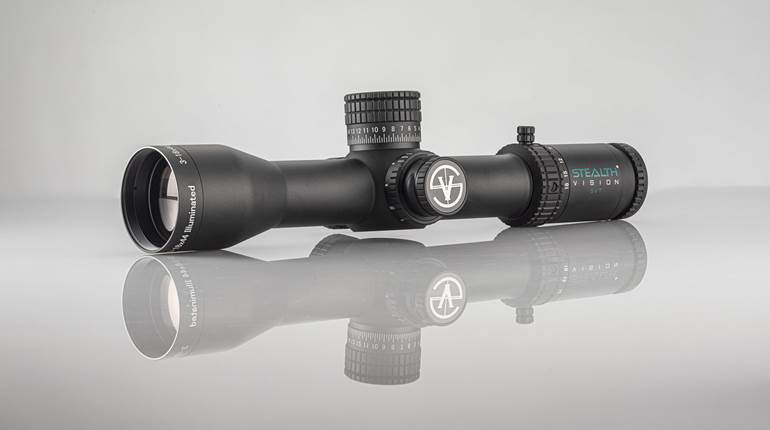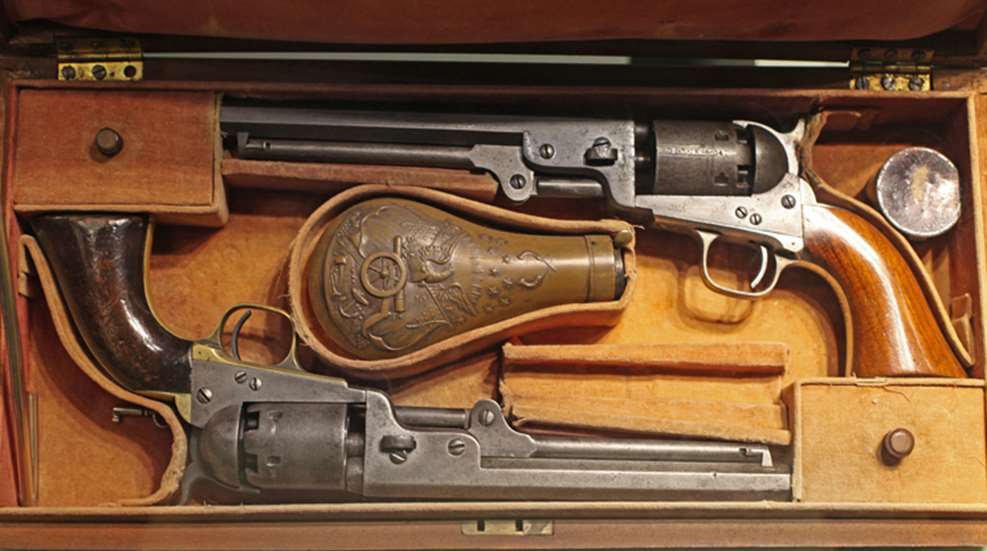
The history of firearms development is the story of the attempt to get one more shot. The first firearms were slow-loading, single-shot affairs and since their inception, innovators have sought ways to reload quicker or fire more than one shot without reloading. Nowhere is the American side of this technological evolution (and sometimes revolution) on better display than in the museums of the Virginia Military Institute (VMI). The Institute’s collection of early American repeating firearms, Civil War weapons and U.S. martial arms showcases how American ingenuity influenced firearm development around the world. 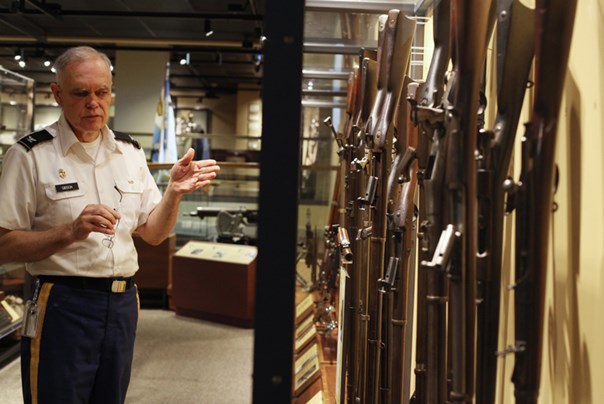
Col. Keith Gibson, executive director of the VMI Museum System, explains the museum's collection of U.S. martial arms.
VMI got its start as a place where firearms were stored. Following the War of 1812, the Virginia legislature saw the need to expand the state’s arsenal system. In 1816, it established an armory across the Blue Ridge Mountains on the edge of what was then the frontier in Lexington. A garrison of one officer and 20 men guarded a store house of 30,000 muskets, pistols, pikes and swords. After the idle militiamen began to find their way into trouble, local residents felt they could find a better use of the guard’s spare time. In 1839, they established the Virginia Military Institute, a school to train the state’s citizen-soldiers. 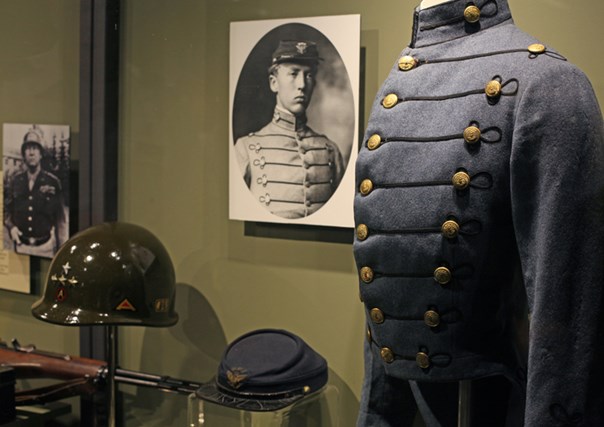
The VMI Museum collection includes artifacts of famous cadets, such as these items owned by George S. Patton.
Nearly two centuries later, VMI has become one of the top military schools in the country with famous soldiers who studied or taught there including Thomas “Stonewall” Jackson, George S. Patton and George C. Marshall. Though no longer an arsenal of contemporary arms, VMI still houses a collection of firearms. Used for cadet instruction, the collection can mount a display from a 15th century hand cannon to a current-issue M4. 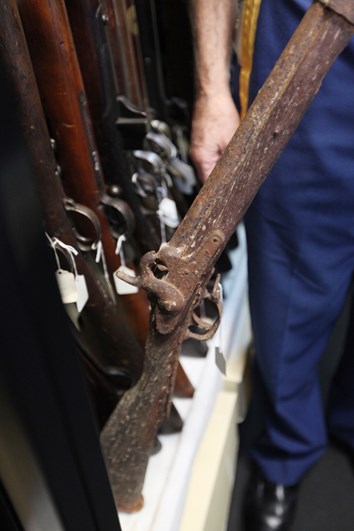
This 1851 Springfield cadet musket was one of 200 provided to VMI. During the Civil War, Union forces raided the school and dumped the muskets in the nearby Maury River. This musket was recovered from the river in 1980.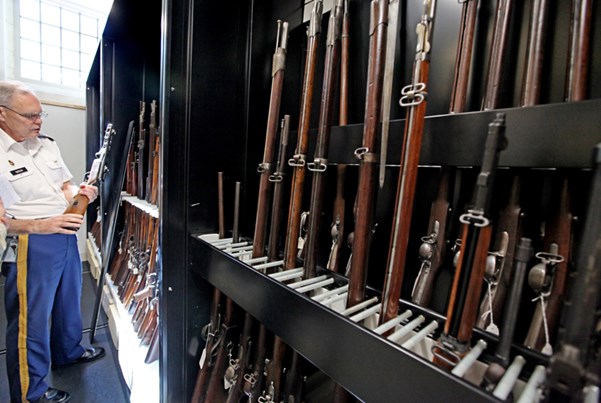
Col. Keith Gibson, executive director of the VMI Museum System, examines a PPSh-41 submachine gun, captured in Korea by a VMI alumni and donated to the school's museum.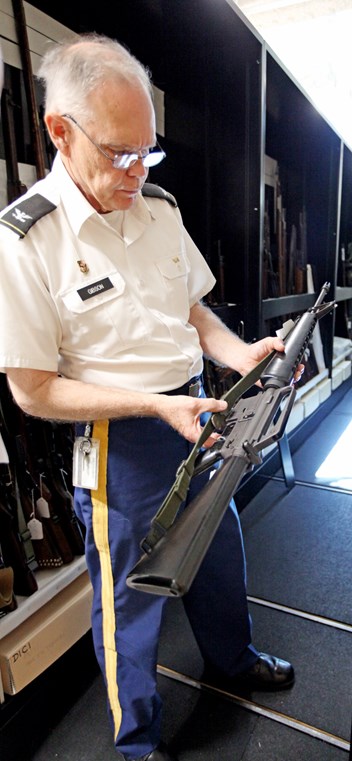
Col. Keith Gibson examines an M16 rifle in the museum's collection.
“When our students study the Battle of the Little Bighorn they can handle a Winchester, which the Native Americans had, and a trapdoor Springfield, which the 7th Cavalry used, and they can understand the concept of what a ‘force multiplier’ the Winchester was,” said Col. Keith Gibson, executive director of the VMI museum system. “It’s a visual and a tactile lesson.”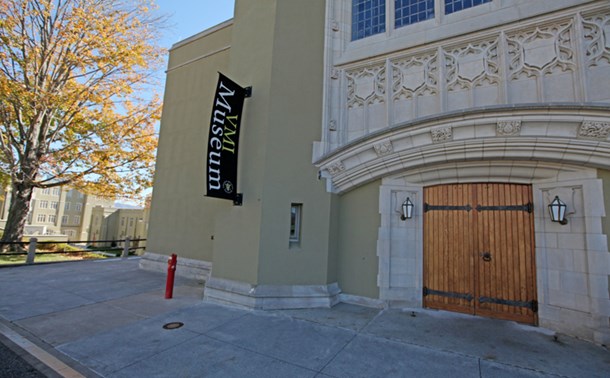
The VMI collection is also on display for the public. The Institute considers its museum to be the oldest in the state. The donation of a Revolutionary War musket in 1856 marked the establishment of the school’s museum. Housed on the lower levels of VMI’s Jackson Memorial Hall, it traces the history of both the Institute and the development of firearms.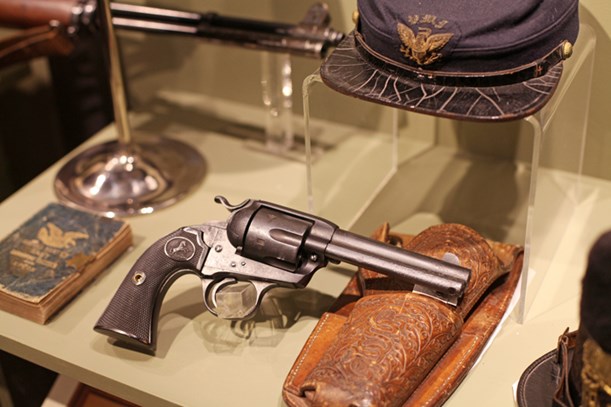
The collection at VMI includes firearms used by former VMI cadets, such as this Colt Bisley revolver owned by General George S. Patton with a holster embossed with his initials.
VMI has nearly 2,000 firearms in its collection, about 700 of which are on display in two locations, which fall into several categories. One is firearms with a VMI connection. These include everything from the arms stored at the school when it served as an arsenal to the rifles issued to the cadets over the years to firearms owned by famous VMI cadets. Notable in the latter category are Patton’s Colt Bisley and his personal M1 Garand. 
Part of the VMI collection is the H. Shepard Rowland, Jr. Collection of British Military Weapons, 1865-1965.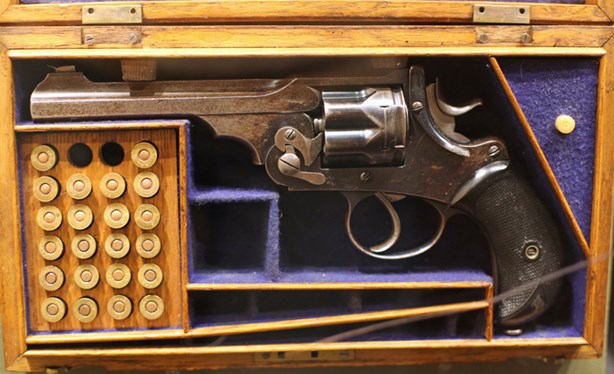
The H. Shepard Rowland, Jr. Collection of British Military Weapons includes items like this Webley 1892 Army revolver.
Also displayed is the H. Shepard Rowland, Jr. Collection, which is one of the most extensive public displays of British military firearms in the U.S. It showcases a hundred years of Commonwealth armament, from Tranters to Webleys, Sniders to Lee-Enfields. 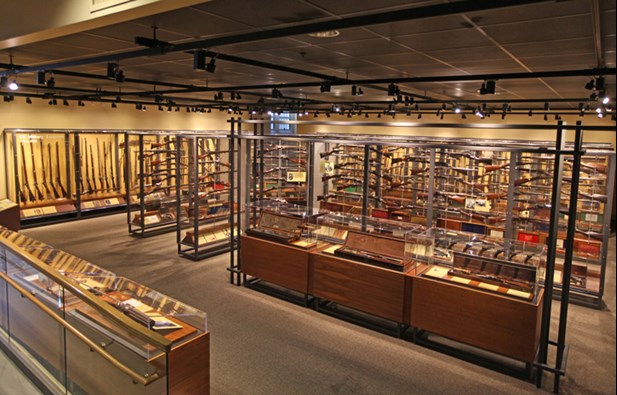
The centerpiece of the VMI firearm's collection is the Henry Stewart Collection of early American repeating arms, air guns, military training rifles and U.S. martial arms.
The centerpiece of the VMI museum is the Henry M. Stewart, Jr. Firearms Collection. Stewart, a 1935 VMI graduate, developed a reputation over half a century as the “dean” of American firearms collecting. The Stewart Collection includes early American repeating arms, air guns (among them is the Lukens air rifle that may have been used on the Lewis and Clark Expedition), military training rifles and patent models. 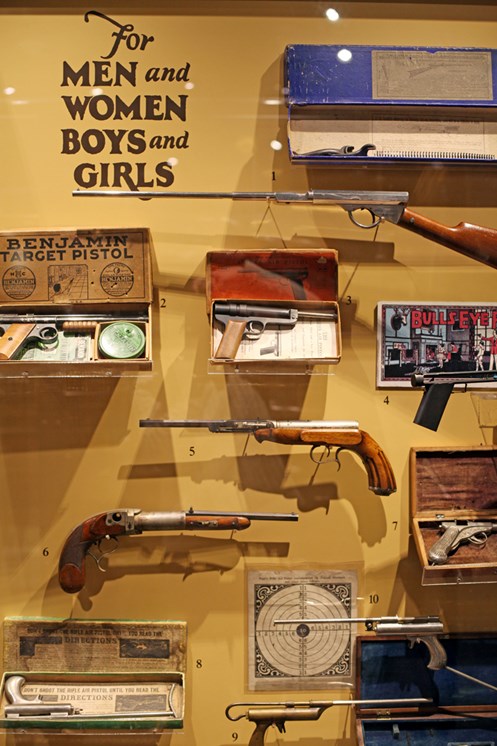
The Henry Stewart collection at VMI includes air guns.
“He put together his collection much in the same way a museum forms a collection. He had focus from day one,” Gibson noted. 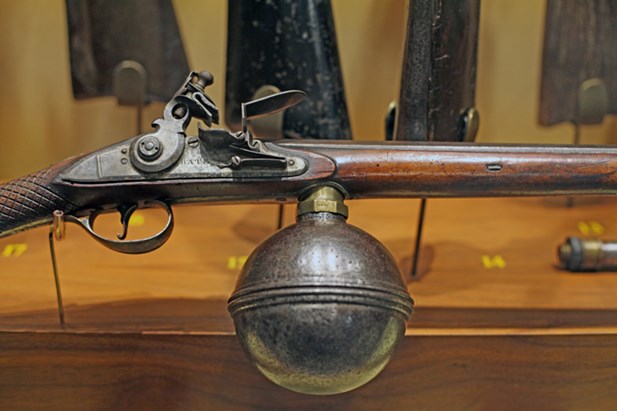
The Henry Stewart collection includes this London-made Bate air rifle, circa 1780. The sphere below the action could be pumped to 700 psi of pressure.
In a way, VMI was the catalyst for Stewart’s life-long focus. Its original museum was housed in the school’s engineering building, where Stewart was a cadet. Cadet Stewart’s fascination with an 1855 Colt revolving rifle on display led to his study of early-American repeating arms.
In 1988, Stewart’s 800 piece collection was gifted to VMI. It would remain in storage for nearly two decades until a renovation and expansion of the Institute’s museum provided a space to showcase it. Now a trip to the lower level of Jackson Memorial Hall is a journey into a world of rare firearms. 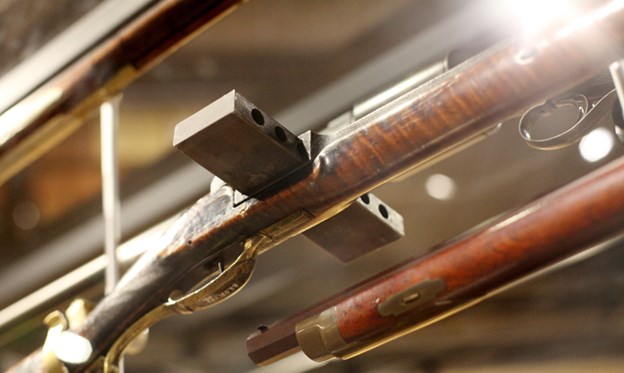
The central part of VMI's firearms collection is the Henry Stewart collection of early American repeating arms, like this "harmonica" rifle.
The highlight of the Stewart Collection is its display of early repeating arms, what Stewart called man’s quest to “get more than one shot.” For the student of modern weapons, the history of multiple-shot firearms starts here, from turrets to cylinders, sliding “harmonica” breechblocks to revolving barrels. 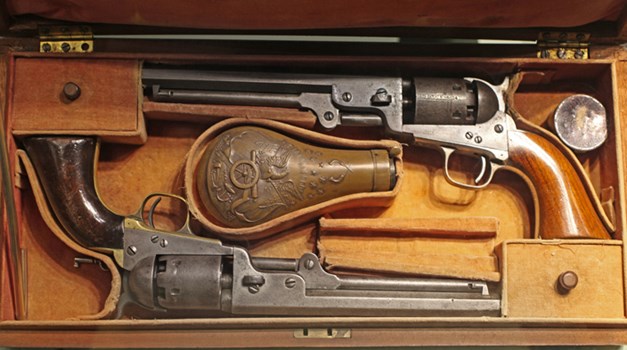
This cased set of Colt 1851 revolvers was presented to Lt. J. H. Chenoweth by the VMI Class of 1860 and 1861. Chenoweth died at the Battle of Port Republic in 1862 while using the lower revolver. The upper revolver and case were returned to his family, who later donated it to VMI. The missing revolver was found in a pawn shop by a VMI alumni in 1930, who purchased it and donated it to the museum. The pair was reunited in 2012.
On display is Artemus Wheeler’s seven-shot revolving flintlock. Wheeler’s 1818 patent was the first in the U.S. for a revolving firearm. Eighteen years later, Samuel Colt would apply for his own patent. Early Colts are on display at VMI, including two dozen Paterson models. Additionally, Stewart accumulated 300 patent models—wood and metal working “blue prints” of the ideas and concepts behind repeating firearms. 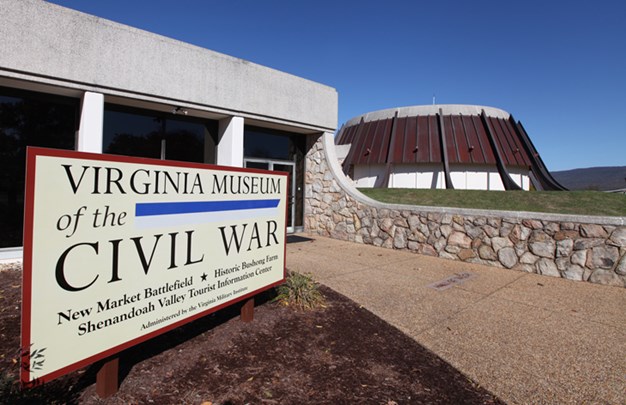
The Virginia Museum of the Civil War is on the grounds of the New Market Battlefield and displays part of the Virginia Military Institute's firearms collection.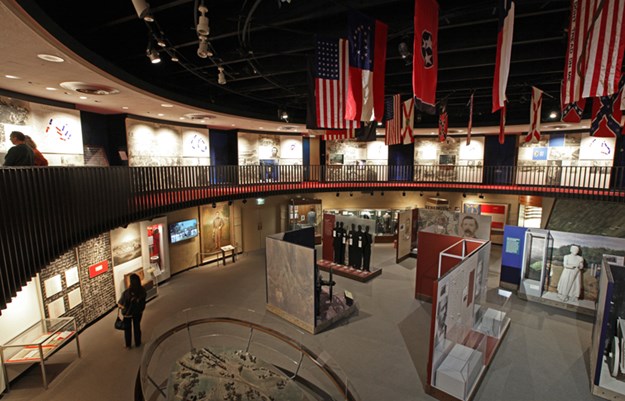
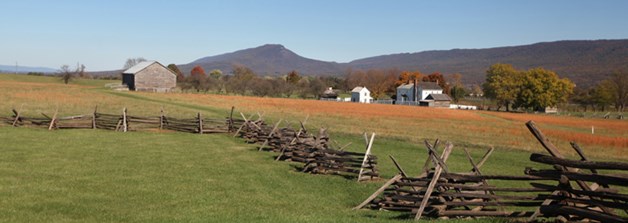
VMI's Virginia Museum of the Civil War is located on the site of the 1864 Battle of New Market, in which VMI cadets participated.
Impressive as the museum in Lexington is, it’s only half of VMI’s firearms display. Eighty miles to the north of the school’s Lexington campus is the Virginia Museum of the Civil War at the New Market Battlefield State Historical Park. The site of the cadet charge that made the school famous, the museum and battlefield are administered by VMI. While the museum, opened in 1970, has always had Civil War firearms on display, two years ago their collection was greatly enhanced. 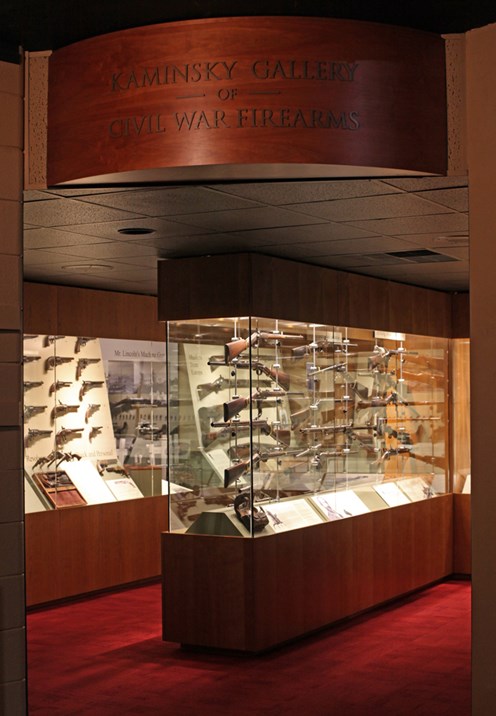
The Kaminsky Gallery of Civil War Firearms is housed in the Virginia Museum of the Civil War at the New Market Battlefield and displays part of the Virginia Military Institute's firearms collection.
In 2016, Martin Kaminsky donated his collection of Civil War firearms to VMI. A display of over 100 pieces traces firearms usage in the Civil War, from the improvised and obsolete designs early in the war to the latest breechloader by the war’s end. The exhibit highlights the plethora of attempts at rapid-firing, breech-loading designs, which Lt. Col. Troy Marshall, site director of the Virginia Museum of the Civil War, calls “the race to build a better mouse trap”—an array of bolt actions, tipping barrels, falling blocks and hinged-breech designs that were fed paper, brass or rubber-cased cartridges. 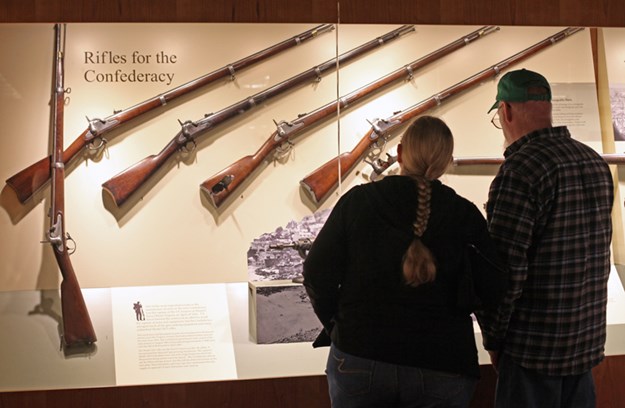
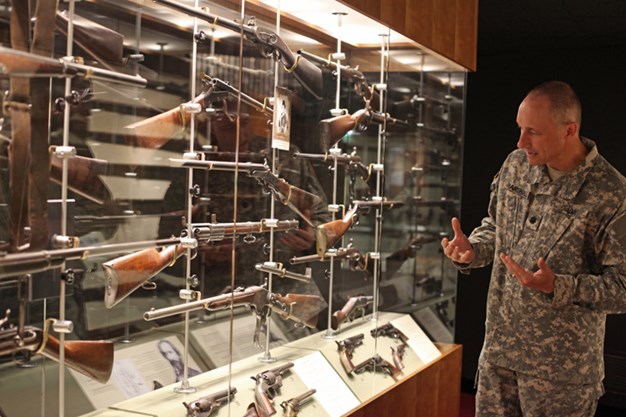
Lt. Col. Troy Marshall, site museum director of the Virginia Museum of the Civil War in New Market, talks about the firearms on display in the museum's Kaminsky Gallery of Civil War Firearms.
“Whether it was Kalashnikov or Stoner, they were building their innovations on the work of that [the Civil War] generation,” said Marshall. 
The collection of the Virginia Museum of the Civil War includes many rare rapid-fire weapons, like this Agar "Coffee Mill" hand-cranked "machine gun." Endorsed by President Lincoln, the Agar had a rate of fire of 120 rounds a minute.
The museum’s collection includes several rare rapid-fire weapons, like the Agar “Coffee Mill” (one of three surviving), a hand-cranked “machine gun” with a changeable barrel that was endorsed by President Lincoln, and the Confederate Williams rapid fire cannon (one of four surviving).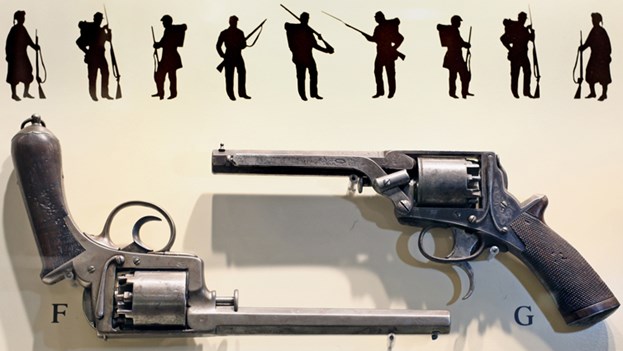
The diversity of firearms used by both sides is on display at VMI's Virginia Museum of the Civil War, such as these English-made double-action revolvers, a Beaumont-Adams (left) and a Tranter (right).
Not limited to firearms, the Virginia Museum of the Civil War deals with every aspect of a soldiers’ life during the war, from primitive attempts at body armor to 19th century advances in transportation and medical technology, along with the history of the Battle of New Market and the service of VMI cadets. 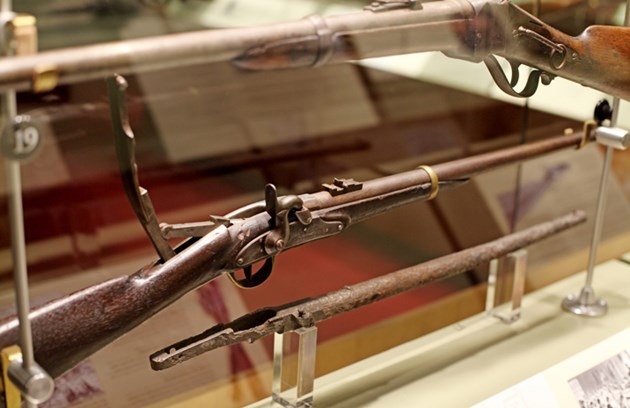
VMI's firearm collection at the Virginia Museum of the Civil War displays the evolution of breech-loading firearms during the war, like this Merrill carbine, which fired a paper cartridge. The barreled action below is the remains of a Merrill carbine recovered on the New Market battlefield, where the museum is located. 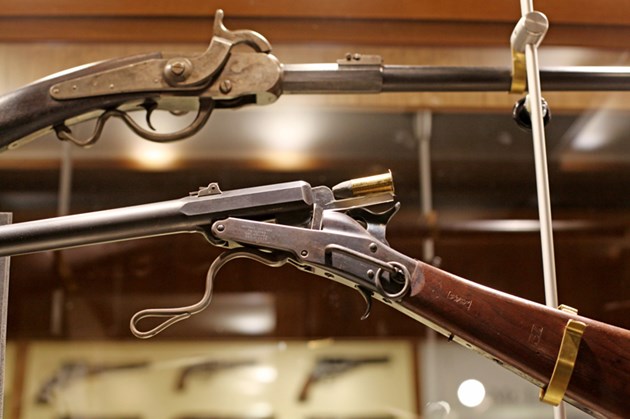
Also displayed is the Cosmopolitan carbine (top), which fired a paper cartridge, and the Maynard carbine (bottom), which used a metallic cartridge ignited by an external percussion cap.
From its humble roots as a militia armory, VMI has grown into an institution with a world-class research and educational firearms collection. For the public, the uniquely American contribution to the development of repeating firearms is on display at the museums of VMI. 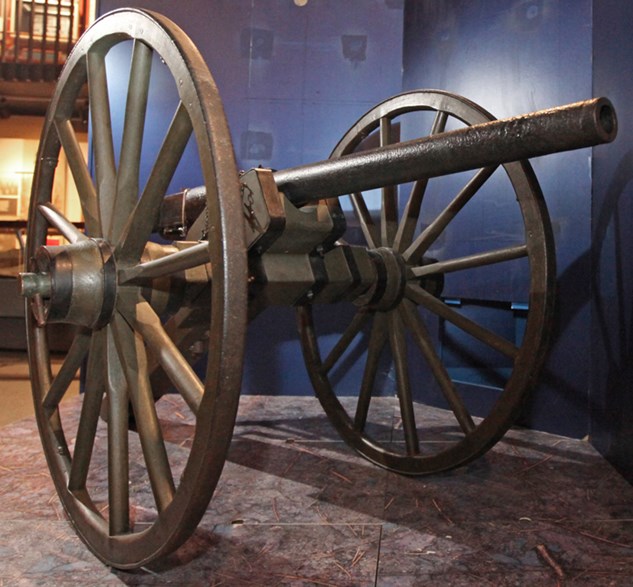
The collection of the Virginia Museum of the Civil War includes many rare rapid-fire weapons, like this Confederate Williams Gun, a breech-loading, one-pound cannon.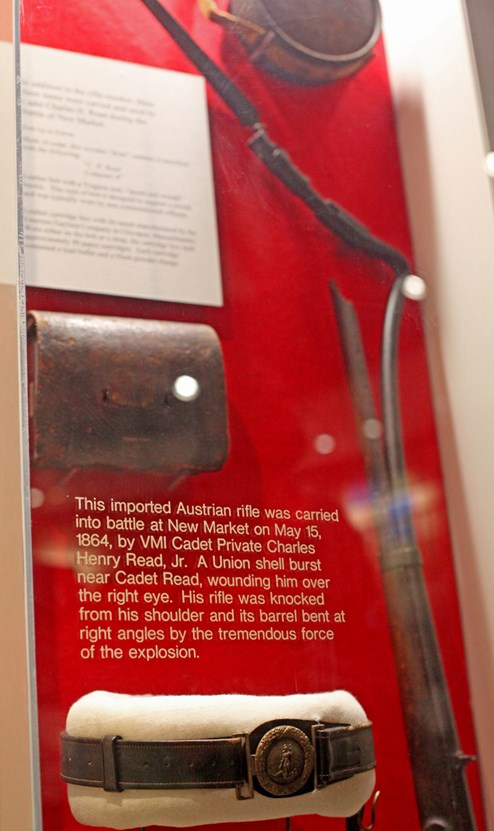
On display at VMI's Virginia Museum of the Civil War is this imported Austrian 1854 "Lorenz" rifle musket, which was carried by the VMI cadets at the Battle of New Market. This particular musket was damaged by shrapnel.
The Virginia Military Institute Museum in Lexington is open to the public from 9 a.m. to 5 p.m. daily (except December 23 – January 3). Admission is free, though a donation is suggested.
The Virginia Museum of the Civil War is open from 9 a.m. to 5 p.m. every day of the year, except New Year’s Day, Thanksgiving, Christmas Eve and Day. A ticket to the New Market Battlefield State Historical Park includes admission tickets to the Virginia Museum of the Civil War. Adult (age 13-64) tickets cost $10, seniors (65+) $9 and youth (6-12) $6. Children five and under are admitted free. A discount is available for current and retired members of the military.













